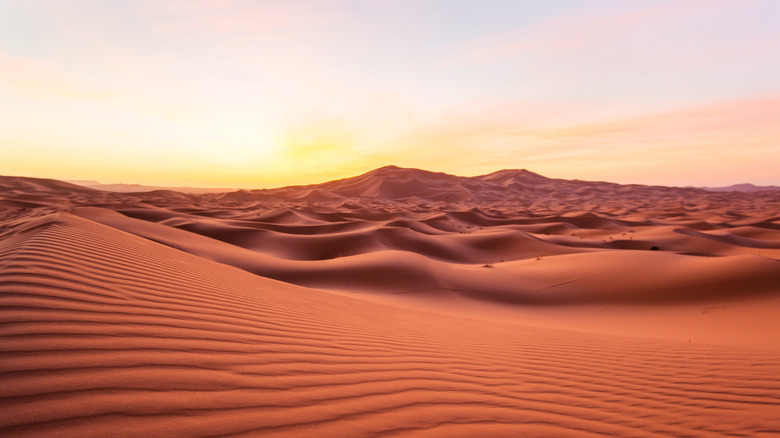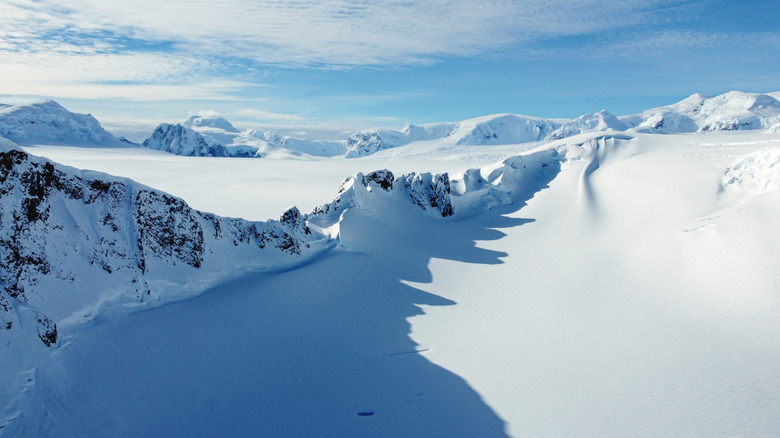Well Actually, The Sahara Isn't The Biggest Desert On Earth
The Sahara is the world's most famous desert, a land of rolling dunes through which camel caravans once roamed from Marrakech to Timbuktu and beyond. At roughly 3.3 million square miles, and occupying almost the entirety of northern Africa, it would seem to obviously be the largest desert on Earth. Its name even means "desert" in Arabic ... how much more obvious could it be? But the Sahara isn't the largest desert on Earth, in fact, it's only number three.
The two biggest deserts on Earth are located in the last two places you'd think to look: the poles. At approximately 5.5 million square miles, the Antarctic Polar Desert, which encompasses the continent of Antarctica, is officially the biggest desert in the world. The Arctic Polar Desert to the north, which covers 5.4 million square miles across portions of Russia, Alaska, Canada, and Scandinavia, comes in a close second place.
The poles rarely come to mind as deserts because we tend to associate deserts with heat. However, the true definition of a desert is simply any ecosystem that receives less than 10 inches of rain per year, which doesn't necessarily entail high temperatures. There are actually four different types of deserts, with hot deserts like the Sahara, Arabian, and Mojave gaining the most renown, but only representing a fraction of what a desert biome can be. Survival in the hot sand is hard, but life in a polar desert is even more extreme.
Life in Earth's largest desert
Antarctica is home to 90% of Earth's surface freshwater, and yet it is the driest place on the entire planet. This is because Antarctica's water is frozen solid in an ice sheet that covers nearly the entire continent, and averages a mile and a half thick. Deserts are all about a lack of moisture, and Antarctica receives only two inches of precipitation per year. That's even less than the average yearly rainfall in the Sahara desert. Plus, Antarctica's freezing temperature, which has been recorded as low as -128.2 degrees Fahrenheit, makes it so cold that whatever precipitation it does receive remains in the solid state, simply adding to the ice.
Even in Earth's most extreme environments, life finds a way, and Antarctica produces some of the world's most resilient lifeforms. The continent's most famous inhabitants are the emperor penguins, the largest penguin species in the world. They have extremely thick coats of feathers, and maintain a large reserve of body fat for fuel during the harshest winter months.
The further you get from the Antarctic coastline, the more extreme the polar desert conditions become, but in the interior, a unique lifeform thrives: lichen, a plantlike organism formed by a symbiotic partnership between an alga and a fungus. Antarctica is home to hundreds of species of lichen, which, having no roots, can grow in places plants cannot, even in the world's biggest and most barren desert.

